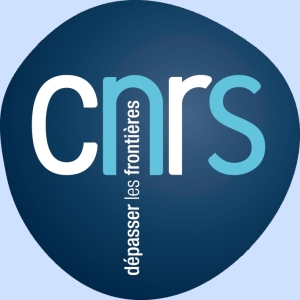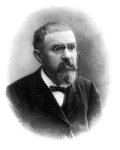
ECOLE
D'ETE NONLINEAR DYNAMICS IN PEYRESQ
Peyresq (23-30 août 2012)

|
|
L'Ecole thématique a pour but de dispenser un enseignement moderne, en anglais, sur des thèmes essentiels à la compréhension et à l'étude des phénomènes non-linéaires et à leur utilisation dans tous les domaines de la physique, mécanique, chimie, biologie, etc. L'enseignement est composé de 5 cours: 2 cours fondamentaux et 3 cours spécialisés. Les deux cours fondamentaux sont consacrés aux notions de base du non-linéaire. Deux cours de démonstrations expérimentales permettent de montrer, sur des exemples concrets, comment les notions fondamentales sont utilisées en pratique et comment elles sont développées. Des mini-cours d'introduction sont organisés, afin de donner une vision rapide et claire sur quelques domaines scientifiques choisis d'actualité, ainsi que des illustrations expérimentales. Le temps au-delà des cours est majoritairement consacré à des discussions sur des points soulevés par les participants et pouvant les aider dans leurs propres recherches (compléments de cours, exemples de calculs, interprétation de cas personnels, théorie, expériences), et aussi par des séminaires que les participants sont invités à présenter. |
 L'école du Non-Linéaire de Peyresq bénéficie du soutien du Centre National de la Recherche
Scientifique.
L'école du Non-Linéaire de Peyresq bénéficie du soutien du Centre National de la Recherche
Scientifique.
| Local bifurcations and reduction methods in reversible
systems. Application to water waves and lattices Gérard IOOSS Lab. Dieudonné, Univ. Nice, IUF |
|
|
| Nonlinear dynamics: a physics introductory viewpoint Chaouqi MISBAH LIPhy, Grenoble, France |
The lecture wil aim at introducing the notions of bifurcation from simple examples in mechanics (spring, pendulum). The basic concepts of the seven elementary catastrophes will be described. Morphogenesis will be addressed from Turing example, together with its potential role in living systems. The next lecture will be dedicated to the amplitude equation in both cases of a stationnary bifurcation and a Hopf bifurcation. Finally I will describe the dilemna of the determination of the invasion speed of a stable solution by an unstable one. |
|
Alice in stretch and squeeze land:
The marvels of topology and chaos Robert GILMORE Drexel University, Philadelphia |
Suppose you have data from a physical system that is behaving chaotically. What do you do? How do you analyze these data? What should you look for? What is the mechanism that generates chaos? For a large class of systems an algorithm now exists for addressing each of these questions successively and successfully. We will go through the steps of this algorithm, showing how each works using experimental data and pointing out the connection with topology. In the process we will develop a classification scheme for strange attractors. |
|
| Dynamics of cellular regulatory networks Marc LEFRANC Lab. PhLAM, Université Lille 1, France |
Inside our cells, essential biological functions rely on complex interaction networks where molecular actors regulate each other so as to generate appropriate biochemical signals. Real-time monitoring in living cells has revealed that these networks are dynamic, spatially organized and highly nonlinear. In particular, typical nonlinear behavior such as bistability and oscillations is harnessed to multiplex cellular information, build clocks, memories or decision circuits. In this course, we will discuss a few case studies representative of systems biology. We will illustrate how nonlinear dynamics is essential to understand the design principles of most cellular regulatory networks. |
|
|
Reservoir computing:
employing dynamical systems for computation Mantas LUKOŠEVIČIUS Jacobs Univ. Bremen, Germany |
Reservoir computing is a recent paradigm of employing dynamical systems for purposeful computation by means of machine learning. While originating in artificial neural networks, it is applicable to a broad range of dynamical systems. The course will contain a quick introduction to the basic concepts of machine learning and artificial neural networks, the origins of reservoir computing, different learning methods and perspectives on it, examples of computation with different types of dynamical systems, applications, some practical aspects, and trends of current research. |
| S. WILSON (INRIA Rhône-Alpes) | Nonlinear models in cancer and immunology | |
| S. METENS (MSC, Paris) | Front instabilities in reaction diffusion boundary value problems | |
| L. PASTUR (LIMSI, Orsay) | Dynamical systems and chaos: Matlab demo | |
| Y. CHEMBO (FEMTO-ST, Besançon) | Multiple time scales in delay dynamics |
| L. LARGER | Photonic Reservoir Computing with delay dynamics |
| Arrivée à Peyresq | jeudi 23 août 2012 en fin d'après-midi (départ du bus à 16:30 de la gare de Nice et à 17:00 de l'aéroport) | |
| Début des cours | vendredi 24 août 2012 à 9 heures | |
| Départ de Peyresq | jeudi 30 août 2012 vers midi (arrivée à la gare et à l'aéroport entre 14:00 et 15:00) | |
| Renseignements & pré-inscription |
Contacter Mariana HARAGUS
(mharagus (at) univ-fcomte.fr). Date limite : 25 juin 2012 | |
| Frais de séjour | Les frais d'inscription de 100 € couvrent le séjour et les cours. Il n'y a pas de frais d'inscription pour les personnels CNRS, ni pour les post-docs ou doctorants sous contrat avec le CNRS. | |
| Frais de transport | Les personnels CNRS s'adressent au service formation permanente de leur Délégation Régionale. Les personnels non-CNRS doivent s'organiser avec leur employeur pour financer leurs frais de transport. En ce qui concerne les étudiants, nous les invitons à solliciter dès maintenant un soutien auprès de l'école doctorale dont ils dépendent dans leur Université. | |
| Bourses | L'école dispose d'un nombre limité de bourses, couvrant le séjour uniquement; elles sont attribuées par ordre d'inscription. |
| Comité |
Mariana HARAGUS (LMB, Besançon) Alain JOETS (LPS, Orsay) Laurent LARGER (FEMTO-ST, Besançon) Stéphane METENS (MSC, Paris VII) Luc PASTUR (LIMSI, Paris 11) | |
| Numéros utiles à Peyresq |
tel : 04 92 83 37 32 fax : 04 92 83 37 67 |
|
|
|
|
 |